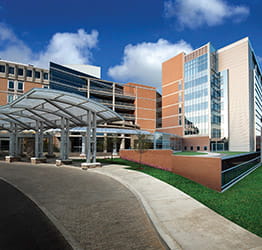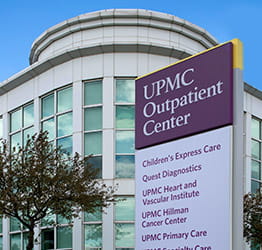Remy Lalisse, PhD, describes the focal seizures he had experienced since at least his teenage years as making him feel “unsettled.”
Sometimes it would happen while he was playing a game. He would feel the sensation of being on a roller-coaster.
“I was often spacing out,” he says now. “Every time I explained it to people, it was more of a mystery.”
A seizure is an uncontrolled surge of electrical activity in the brain. A focal seizure begins in one location of the brain, either the right or the left hemisphere. They are the most common type of seizure. Sometimes, a focal seizure can move from one location to another.
Remy was diagnosed with focal epilepsy at 16, the day before he was scheduled to take his driving test. But he suspects he had had it since childhood.
The Challenge
Remy’s seizures worsened over time, and he began to have tonic-clonic seizures. This type of seizure causes loss of consciousness and muscle contractions. Tonic-clonic seizures begin in one area of the brain and spread to become generalized seizures that involve the entire brain.
Remy grew up in New York State. As an undergraduate, he had testing done, but the specialists he saw were not able to locate the source of his seizures. He attended graduate school at The Ohio State University, earning a PhD in chemistry. He says he did not have the time to look at the seizures again. Instead, Remy was prescribed medication to try and control the seizures. His medication was adjusted many times. He underwent surgical evaluation in New York and was not considered a candidate for surgery at that time. He was disappointed and was kept on medications.
After earning his doctorate in chemistry, Remy moved to Pittsburgh with his girlfriend. At the time, he says, the seizures were getting worse. His girlfriend was starting a degree in clinical psychology, taking a class in neuropsychological assessment with Luke Henry, PhD. Through her, Remy met Dr. Henry, a clinical neuropsychologist with the UPMC Neurological Institute and part of the epilepsy team.
The Path to UPMC
Dr. Henry referred Remy to see Thandar Aung, MD, medical director of the epilepsy surgery program at the UPMC Comprehensive Epilepsy Center. UPMC’s center is a level 4 epilepsy center as determined by the National Association of Epilepsy Centers – the highest ranking a center can receive.
When Remy first met Dr. Aung, Remy had tried six to eight different combinations of medications and having seizures up to three times a day. Dr. Aung explained that after failing two appropriately chosen medications, the chance of seizure freedom for longer than three times of his normal seizure frequency will become very slim. Surgery might be the best option.
Remy says, “The prospect of surgery scared me quite a bit,” but meeting with Dr. Aung and Jorge González-Martínez, MD, PhD, Director of Movement Disorders and Epilepsy, reassured him. He was able to talk about his fears.
“I had never heard the words ‘You could be seizure-free’ until I came to UPMC,” says Remy.
Identifying the Source
Remy went through a three-step process at UPMC for what he calls “a lengthy analysis of what was going on in my brain.”
First, in June 2023, he had electrodes placed on the top of his scalp. Three months later, electrodes were surgically implanted in his brain. After the SEEG, Dr. Aung did a unique exam -- stereo-electroencephalography and magnetoencephalography (SEEG-MEG), which uses electromagnetism to locate the part of the brain where the seizures originated.
The exams showed that Remy’s seizures started from the regions of the right superior temporal sulcus, pinpointed by the SEEG data and further tailored by the simultaneous SEEG-MEG recording.
Identifying the source of Remy’s seizures by Dr. Aung was critical for his eventual surgery because it gave Dr. González-Martínez a roadmap. Remy underwent epilepsy surgery guided by electrocorticography (ECoG) by Dr. González-Martínez and Dr. Aung. He knew it was necessary to resect, or cut out, the part of the right lobe of the brain from which the seizures started.
Remy Today
Remy’s surgery was in December 2023. His surgery lasted longer than anticipated – about 9 to 10 hours. He stayed for about four days in the hospital and was able to travel home (as a passenger in a car) for Christmas.
He said, “this was the best Christmas gift I could have hoped for.”
Dr. González-Martínez was able to remove the small seizure focus. Pathology determined it was focal cortical dysplasia in the right lateral posterior temporal lobe. Remy has not had a seizure in the six months since the procedure.
Now 28, Remy works as a postdoctoral research associate in chemistry through Texas A&M University. He looks at different metals, like nickel, and their feasibility for drug discovery.
He says he felt supported by the entire UPMC Comprehensive Epilepsy Center, from Dr. Henry to Dr. Aung to Dr. González-Martínez. And that Andres, the MEG operator, was amazing.
Soon enough, Remy says, he’ll be getting his driver’s license.
Remy’s treatment and results may not be representative of all similar cases.

















